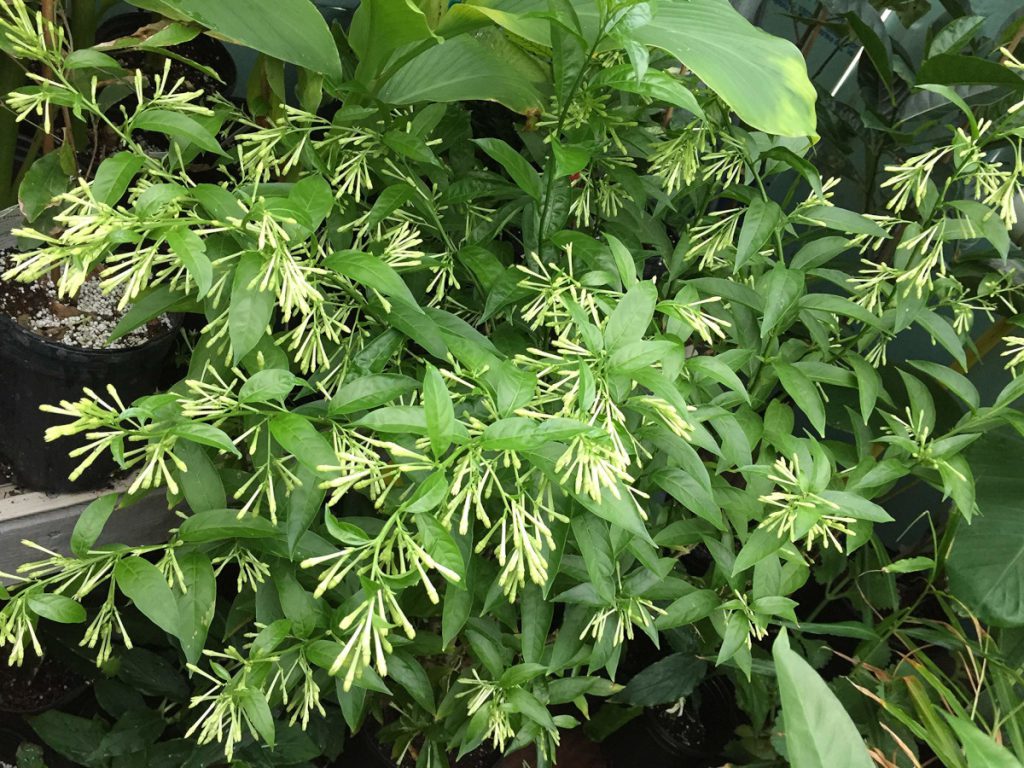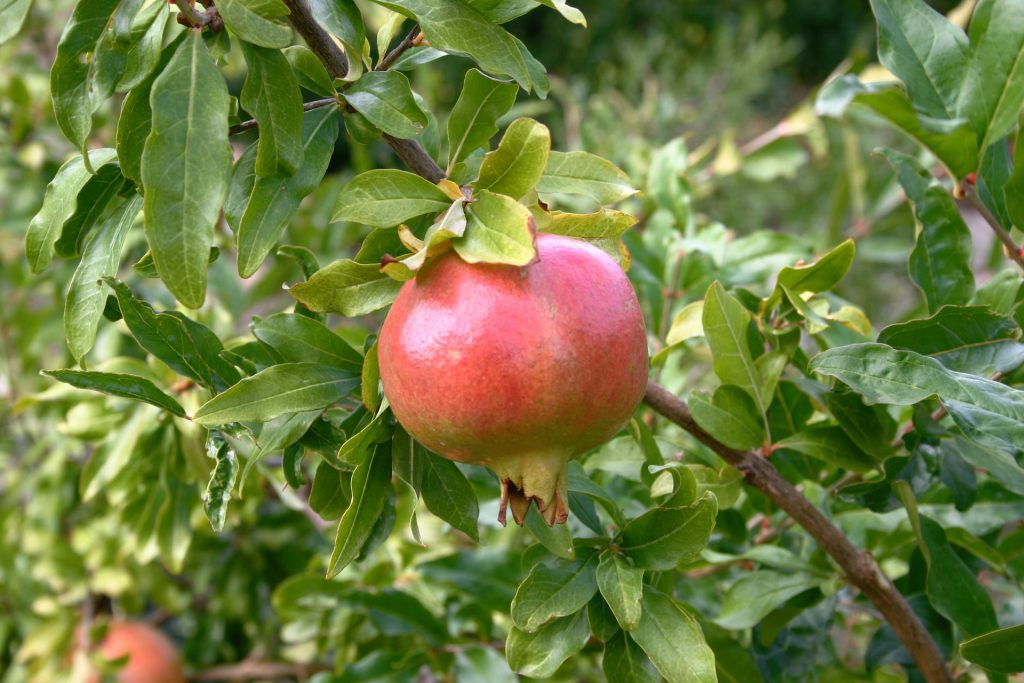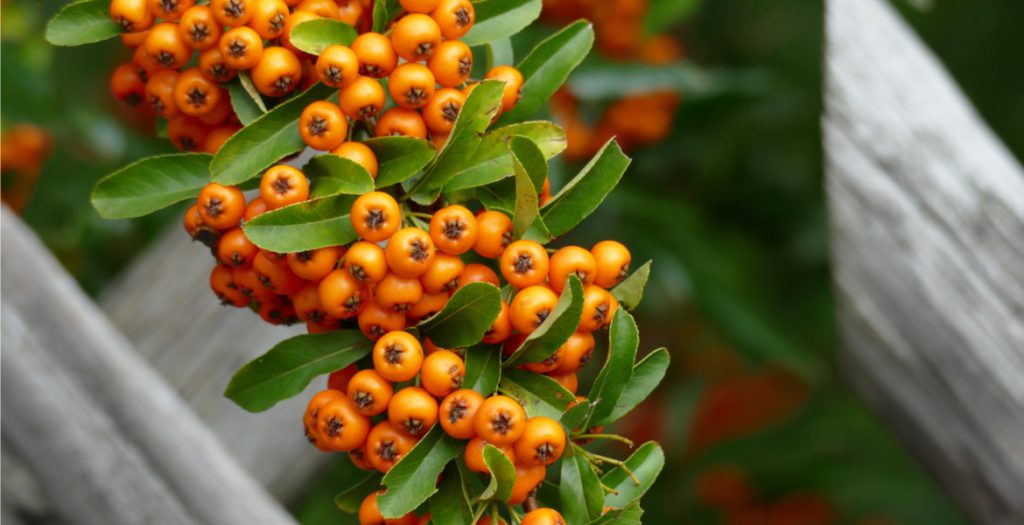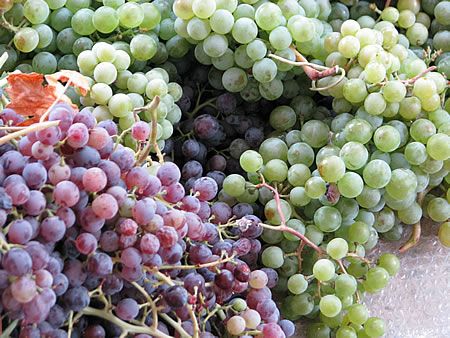Night-Blooming Jasmine (Cestrum), is a common plant in Greek courtyards. This plant has a natural way to scent the air with a light floral musk and will please everyone’s olfactory senses! The flowers open at night because they rely on moths to pollinate them. As an indoor flowering plant, needs a lot of light to bloom and should be placed near a south or west-facing window. Keep the soil consistently moist during the growing season but remember to cut back on watering during the winter months. Night Blooming Jasmine is a prolific bloomer, and it requires fertilizer to help keep the flowers forming throughout the summer. Read more to learn how to grow these flowering shrubs indoors!
Light
The best way to get Night Blooming Jasmine to bloom all night long is the give it a day’s worth (every day!) of very bright indirect sunlight! South-facing windows are the ideal locations that will provide them with access to the light they require to pump out flower buds. Denying them more than 6 hours of the brightest indirect light will turn them into Night Jasmines (bye-bye blooms).
Water
Night Blooming Jasmine is a busy plant. It creates flower buds constantly when given the proper amount of light, and in return, it cranks out lots of growth. This growth takes a lot of resources, and water is the main one! Cestrum nocturnum’s soil should never be allowed to dry out completely as this can cause leaf and flower bud to drop. If you keep your jasmine outdoors for the summer, you will water it daily! Keep an eye out for dry soil and water the soil slowly to give the soil time to absorb the moisture.
Soil
It all starts and ends with the soil. Jasmine growing in compacted and nutrient-poor soil doesn’t stand a chance! If you decide to transplant your Night Blooming Jasmine (we do not recommend transplanting your new plants for at least 3-6 months after receiving them!), please use a soil rich in organic matter that drains well but not excessively. Your Cestrum’s roots need time to absorb the moisture from the soil, but not so much time that the roots can drown! You can use any reputable soil mixture containing organic composted material and does not contain water-retentive crystals.
Temperature
The ideal temperatures for your Night Blooming Jasmine are between 70-80°F – they like it hot! The warmer it is, the more likely they will continue to bloom but beware of extreme periods of heat as this can dry out the soil very quickly! It is good to move your jasmine to a shady spot during heat waves to prevent excessive moisture loss! If you keep your jasmine (or are considering) outside, make sure that you bring it back inside before the nighttime temperatures drop below 50°F. They can withstand temperatures in the 40’s, but it’s better to be safe than sorry!
Humidity
Jasmines love moist air. If you can keep the humidity levels over 50% in the air space around your jasmine, all should be fine! Leaves that look brown around the edges are a good (or not so good) indication that your humidity levels are low! Learn how to increase the humidity of your indoor plants!
Fertilizer
Yes, you should fertilize your Night Blooming Jasmine! We talked about how much work they do to provide you with that memory-making scent in the ‘Water’ section. The same goes for using up the soil’s nutrients. Give them complete liquid fertilizer diluted to ¼ strength after every watering! This might seem excessive, but they won’t mind pulling all-nighters all summer long if you consistently feed them during their busy work!
Growth Rate
If grown in favorable environments, Jasmine is a fast-growing plant (see above instructions!). They can reach 8’+ indoors depending on the light they receive. Feel free to prune them back to keep them from taking over your solarium!
Attention
Night Blooming Jasmine is toxic to pets!
Pruning Cestrum, Night-Blooming Jasmine
Annual pruning in the fall after flowering has finished encourages thick but compact new growth and reduces the plant’s invasive traits as the seeds of the berries won’t be dispersed by feeding birds.
If you want to prune the Night-Blooming Jasmine, mainly to check its shape, you should do it in early spring before new growth starts to appear or in autumn after the end of flowering. If you prune in spring, be a little careful because the flowers appear on the new shoots rather than on the woody old branches. Therefore, if new branch growth has started, it is best to leave pruning for the autumn. Generally the cestrus will benefit from a deep pruning as apart from controlling the shape, pruning mainly enhances its growth.
Greek name: Κέστρο (Νυχτολούλουδο).
Source: https://www.valentine.gr/cestrum_gr.php, https://planterina.com/blogs/indoor-plant-care/night-blooming-jasmine





